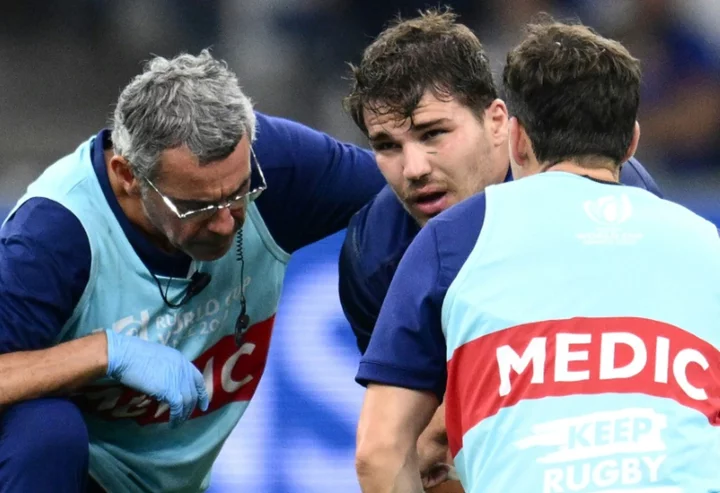
'Avengers' star Chris Evans marries girlfriend Alba Baptista in a low key wedding ceremony in Boston
Chris Evans and Alba Baptista made their relationship Instagram official in January 2023
2023-09-11 09:53

Bruce Bochy is back in the postseason with the Texas Rangers. He missed it while he was away.
Bruce Bochy is back where he prefers to be at this time of the year
2023-10-12 07:58

Philippines Q2 growth disappoints as inflation, high interest rates bite
By Neil Jerome Morales and Enrico Dela Cruz MANILA (Reuters) -The Philippine economy grew at its slowest pace in nearly
2023-08-10 11:57

Andrew Tate exposes DIICOT's letter campaign to 'start a new file' against Tate brothers, fans react as Top G labels democracy 'scam'
Andrew Tate's fans claimed DIICOT's letter campaign was an international vendetta
2023-08-11 18:57

Bayer Leverkusen director discusses Real Madrid interest in Xabi Alonso
Bayer Leverkusen director Simon Rolfes has responded to Real Madrid's interest in Xabi Alonso. The former midfielder is being eyed as a potential successor to Carlo Ancelotti.
2023-10-02 18:55

'Celebrity IOU' Season 6: Who is Mark Harari? Derek and Julianne Hough surprise fitness trainer with home makeover
Mark Harari has been friends with Derek and Julianne Hough for over 15 years
2023-06-20 07:24

France have 'no doubt' Dupont could return for Rugby World Cup quarter-final
France forwards coach William Servat said on Tuesday he had "no doubt" that emblematic captain Antoine Dupont could return from injury in time for a potential...
2023-09-27 01:58

Tuareg flock to Algerian desert oasis for ancient festival
In a riot of colour, music and dance, thousands of Tuareg have flocked to the Sebeiba festival that marks the end of an ancient tribal feud and which once a year transforms an...
2023-07-30 22:59

Trump is 'toast' if classified records case is proven, ex-attorney general says
By Sarah N. Lynch WASHINGTON Former U.S. Attorney General William Barr on Sunday defended Special Counsel Jack Smith's
2023-06-11 23:21

Cardinals latest hero earning his forgiveness with Cardinals fans
Cardinals reliever Jordan Hicks just had an incredible end-of-game performance in which he delivered all his nasty stuff.Make that Jordan Hicks' third straight save appearance for the St. Louis Cardinals. On Monday night's win against the Washington Nationals, Hicks recorded a strikeou...
2023-06-20 22:17

Spanish king to consult parties next week on new government
MADRID Spain's King Felipe will kick off a two-day round of meetings with the country's main political parties
2023-08-18 20:58

Andrew Tate sparks outrage by exploiting his mother's narrative to dictate what 'men want', Internet dubs his mother 'live in nanny'
Andrew Tate, the controversial influencer faced renewed backlash for his misogynistic views, this time involving his own mother in derogatory remarks
2023-06-30 18:17
You Might Like...

Jets send wide receiver Denzel Mims to the Lions in a trade that includes 2025 draft picks

Record heat and power outages create 'the perfect storm,' meteorologist says

Upward of 20,000 Ukrainian amputees face trauma on a scale unseen since WWI

California governor says he will sign climate bill

Borussia Dortmund vs Newcastle LIVE: Champions League team news and line-ups as Anthony Gordon on bench

Mexico's economy to slow in step with US growth moderation: Reuters poll

Ducks hire former Leafs, Islanders assistant Greg Cronin as head coach

After scoring goals for France, Kylian Mbappé needs to start scoring again for PSG
